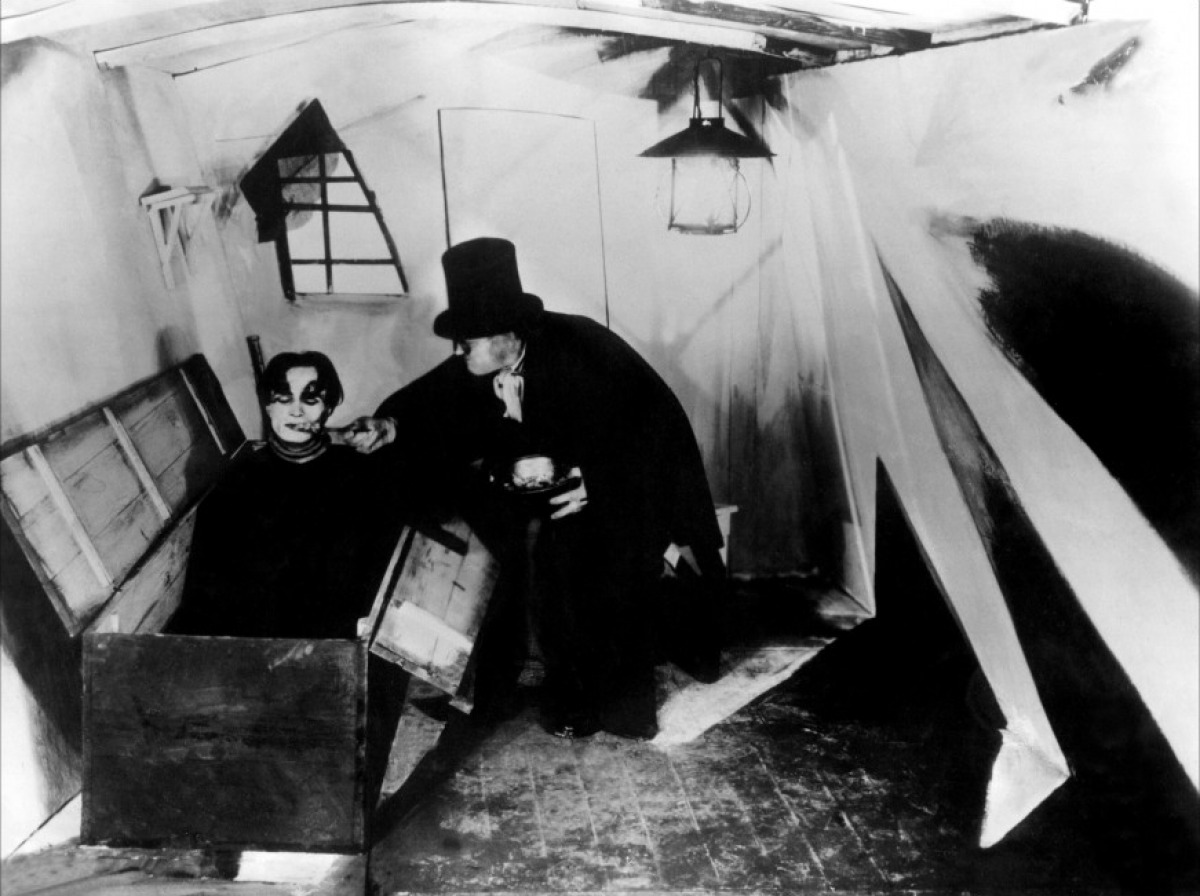
There is no film more important in the history of cinema than Citizen Kane. One only needs to look at the films being made after it to understand its influence and how far it impacted the industry as a whole.
If anyone says it is undeserving of its praise, they have either yet to see it or they lack a knowledge of film history to fully understand its significance.
That is not to say of course that everyone instantly needs to throw away their own picks for their favourite films and simply adopt this one, but it does mean that you should rarely be surprised or confused as to why it is so frequently named the greatest film of all time.
It is essentially an entire film education packed into two hours with its multiple levels of staging and deep focus, dramatic lighting, differing camera heights, nonlinear narrative, social relevance and impeccable execution of a perfect character study.
The most audacious aspect of the film could be the fact that this was Orson Welles’ very first film as a director. While we would like to believe it was all natural instinct or emotional response or something like “it came to me in a dream” mythical kind of reason for the final result, it is safe to assume that much of Welles’ techniques were amalgamated from various other movies he had watched and studied throughout his life.
Welles learned every technique he knew from watching classic films and essentially borrowed every technique that caught his eye. Now of course that does by no means make him a plagiarist or lessen the importance of Citizen Kane, remembering that it was the first film to unify all of these techniques and apply them to its narrative so effectively.
Welles was once asked about where he gained the confidence to make the film to which he replied “Sheer ignorance”. He did not invent any of these techniques but with a mind free from the limitations of experience Welles was able to weave a rich tapestry of cinematic techniques that filled such a meaningful role within the history of film.
But this begs the question, what films did he borrow from? What movies were admired enough by Welles for him to use them as inspiration for the greatest film ever made?
Either Welles’ favourite, most studied or most cited films are to be found on this list. With some having very clear and specific influences on Citizen Kane and others merely fueling a broader idea of what kind of film Welles wanted to create. Here are ten of those films.
10. The Crowd
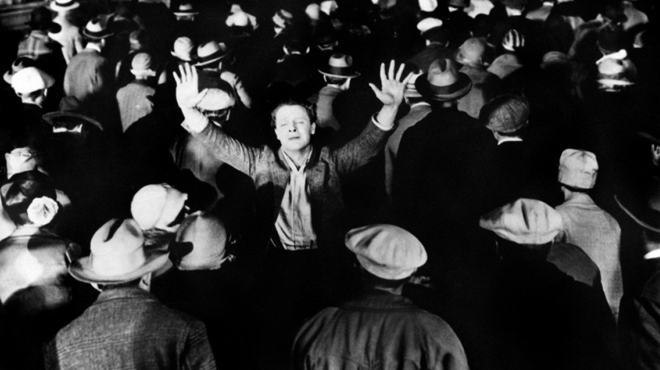
Having praised the sequel to King Vidor’s celebrated 1928 silent movie (Our Daily Bread, that was also directed by Vidor) as one of his all-time favourite films, it should not be too surprising that he sought influence from the movie. Its combination of innovative camera movements and socially relevant stories were almost certainly impactful to Welles when he first saw the film.
In was also one of the films he procured shortly before filming went underway and he took extensive notes of the subtle camera movements that were utilised throughout. Due to the limitations imposed by early sound filming techniques, the film’s moving camera innovations would not be equaled for another decade.
The film’s stark realism was also an innovation at the time and something that Welles tried to replicate repeatedly throughout Citizen Kane in order to make the titular character more relatable. In particular the story of Kane’s origin as a boy who grew up in relative poverty. In the face of the Great Depression, The Crowd was a socially relevant film and Welles also tapped into that area of social relevance by making his film relate to the most powerful media mogul of that era.
The realism of The Crowd was hailed as such a fine example of Depression era of American culture that when Jean-Luc Godard was asked in the 1960s why more films were not made about ordinary people, and his response was “Why remake The Crowd? It has already been done”.
9. City Lights
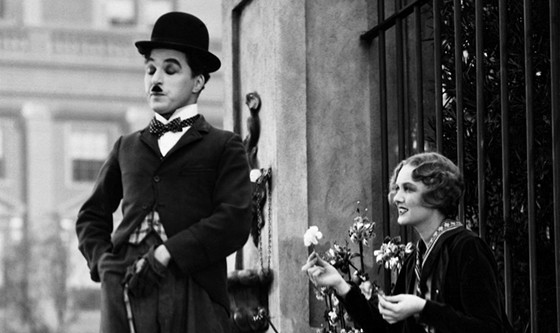
Welles frequently praised Charlie Chaplin’s widely acclaimed masterpiece as one of his favourite films of all time and while its influence on Citizen Kane may seem minimal, a closer look may indicate a stronger connection than one would initially think. Years after talkies had become the main form of filmmaking, Chaplin still chose to use silent comedy as a way to tell his stories. That of course meant purely visual storytelling, a romance of no words.
Citizen Kane makes great use of visual motifs rather than standard dialogue and again that may seem like a loose link between the two, but when you consider that Welles holds this specific film in such high regard and that it was released just a few years before Citizen Kane, then the connection seems stronger.
In fact it was Chaplin who recommended Dotty Comingmore to play the part of Susan Alexander Kane. This is not to say that Welles used any specific visual cues from Chaplin, but it is safe to say he held it as a fine example of representing emotions through visuals and there is plenty of that throughout Citizen Kane.
Movements, looks and gestures all play into the character relations within Citizen Kane. Consider how Kane’s two associates, Jedediah Leland and Mr. Bernstein, stand around him. One stands tall next to him, looks him square in the eye when he talks to him, standing before him as his equal while the other skirts around the edges, complies to his friends’ every decision and rarely seems to be seen in the same light as Kane himself.
Even a simple staging device can tell you so much about the power dynamic between certain characters from the Kane household in 1871 to the Inquirer’s Newsroom.
Perhaps one of the most seemingly simple yet hauntingly powerful visual cues comes at the end of the breakfast table montage that both emphasises the married couple’s relationship and emphasises the growing distance between them without any clumsy expositional dialogue or obvious explanation.
8. The Rules of the Game
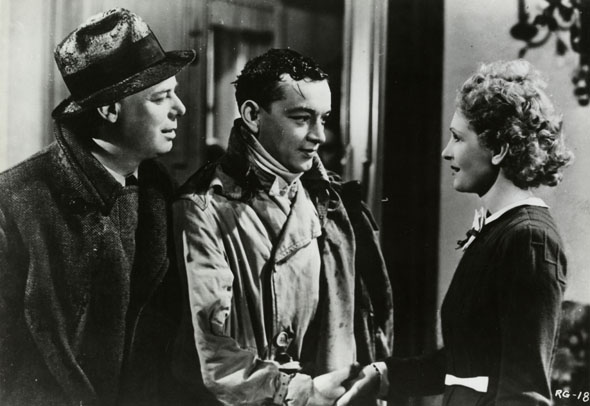
Another broad link but like the comparison to Chaplin’s film, it holds much more ground when one realises how much Welles admired Jean Renoir’s satirical masterpiece.
The film is a comedy of manners that depicts members of upper-class French society and their servants just before the beginning of World War II, showing their moral callousness on the eve of impending destruction. It was such a biting satire that it ended up being banned in its sovereign nation but only after being a critical and financial disaster.
Of course Citizen Kane also underperformed at the box office and was met with some critical backlash upon release, most of which from William Randolph Hurst. Now it is safe to say that Welles did not deliberately intend for his film to have this kind of reaction and it was nowhere near as harshly viewed as The Rules of the Game was upon its release. However the backlash for each film came from similar reasons, cutting too close to the bone of real events.
What is important to remember is that when Citizen Kane and The Rules of the Game came out, cinema was seen as a means of escapism so viewers were not ready to be confronted with films that depicted issues so close to their everyday lives and culture like the ruling classes that dictate world movements being rambunctious buffoons, or one of the most powerful and influential men in the world being an unstable sociopath.
But on a technical level, the two films also have a lot in common. It was due to their sophisticated camera techniques that they ended up exceeding their initial budgets. Renoir and his cinematographer Jean Bachalet also made extensive use of deep focus cinematography and long shots that kept the camera consistently moving to emphasise character relations and the environments they inhabit.
Citizen Kane’s use of deep focus is often hailed as its most innovative technical aspect. In nearly every scene in the film, the foreground, background and everything in between are all in sharp focus.
7. M
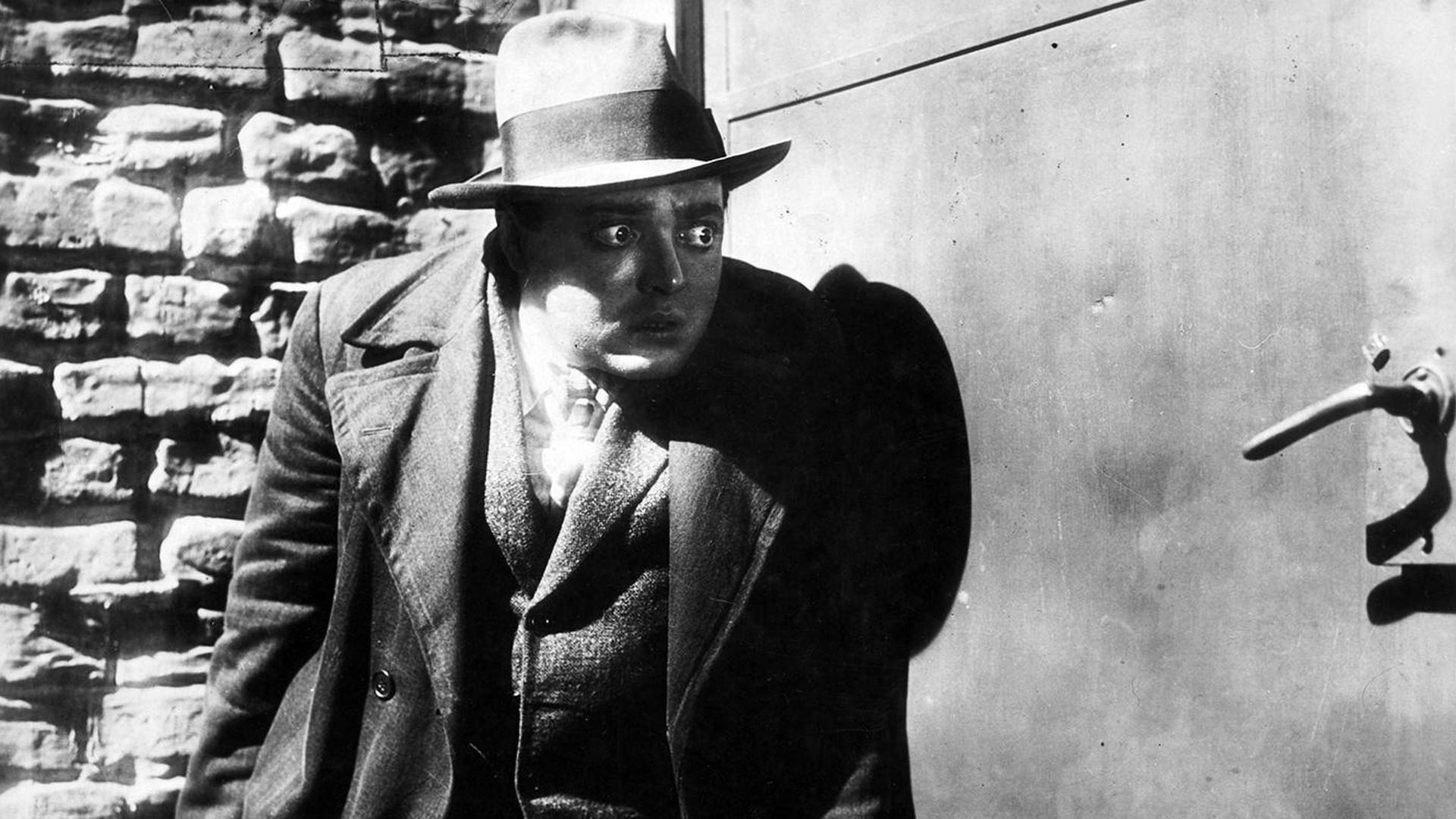
In preparation for shooting the film, Fritz Lang was among the directors whose work Welles watched extensively to try and draw some kind of inspiration from it and while on the surface there appears to be little in common between the two, but certain aspects are conjoined, in particular the sound design of each film.
Considering that it was his first non-silent film, the sound design for M stands as a fantastic achievement in Lang’s career. He took a far more experimental approach than many other directors from his era and he was rewarded for it.
The same thing happened to Welles when he went about making Citizen Kane as it would one day be praised by Francois Truffaut as the first film in Hollywood to really utilise its sound and praised its use of radio techniques that were previously left out of the movie making process but were included by Welles due to his extensive knowledge of radio from The War of the Worlds broadcast.
Within M, Lang pioneered numerous techniques that are seen as standard today. Narration, intercut dialogue and mixing sounds and visuals from completely different areas in time and location made it revolutionary at the time and allows it to feel remarkably modern today. The dialogue in Welles’ film took a similar approach and sometimes went a step further. Several complicated scenes involved mixing several soundtracks together.
Welles experimented with sound in post-production, creating audio montages, and chose to create all of the sound effects for the film instead of using RKO’s library of sound effects. He also used an aural technique from radio called the “lightning-mix”. Welles used this technique to link complex montage sequences via a series of related sounds or phrases and utilised this multiple times.
Kane is able to grow from a young boy to an adult in two shots through an inventive use of sound. As Thatcher hands eight-year-old him a sled and wishes him a Merry Christmas, the sequence suddenly jumps to a shot of Thatcher fifteen years later, completing the sentence he began in both the previous shot and the chronological past.
Other radio techniques include using a number of voices, each saying a sentence or sometimes merely a fragment of a sentence, and splicing the dialogue together in quick succession, such as the projection room scene.
6. Battleship Potemkin
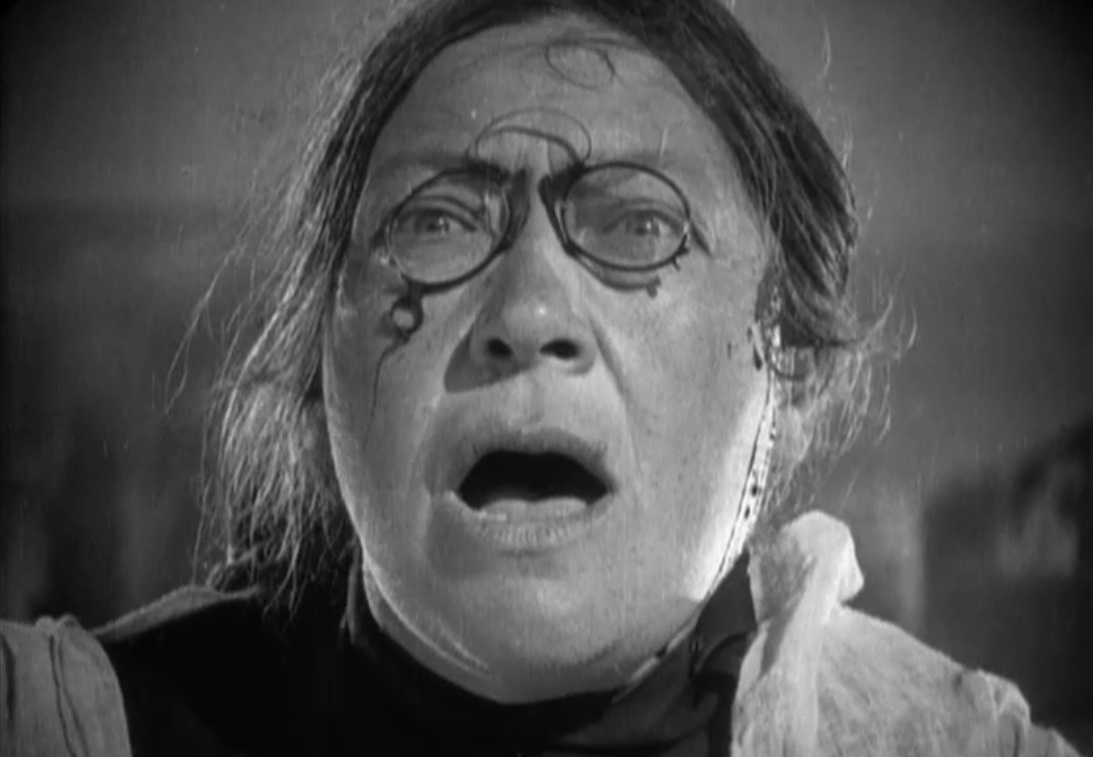
Sergei Eisenstein is often associated with his famed editing theories. Eisenstein often theorised that by editing, jarring or contrasting images, one could generate an emotional or provocative response. His 1925 film Strike utilised this by drawing comparisons between the crushing of striking workers by soldiers and the slaughtering of a bull. In Battleship Potemkin, particularly its famed Odessa Steps sequence in which citizens are massacred by soldiers.
The scene has been described as one of the most influential in the history of cinema, introducing concepts of film editing and montage that had never been seen before. In the scene, the Tsar’s soldiers in their march down a seemingly endless flight of steps in a rhythmic, mechanical fashion, firing volleys into a crowd.
A separate detachment of mounted Cossacks charges the crowd at the bottom of the stairs. The fatalities include an old woman, a young boy with his mother, a student in uniform and a teenage schoolgirl. A mother pushing an infant in a baby carriage falls to the ground dying and the carriage rolls down the steps amidst the fleeing crowd.
The scene itself never happened in the real story being depicted in Battleship Potemkin and Eisenstein added it for what he felt was dramatic effect. It stands as possibly the best example of Eisenstein’s editing theory and had been paid homage to in films like Brazil, The Godfather and The Untouchables. It also had a profound impact on Orson Welles.
Due to its unique narrative Citizen Kane used montages to collapse time and space around the characters and draw the essential comparisons that the audience needed to notice.
In the breakfast montage, Welles chronicles the breakdown of Kane’s first marriage in five vignettes that condense 16 years of story time into two minutes of screen time. While the concept of the scene was borrowed from a one act play called The Long Christmas Dinner, the associative contrasts and sudden manner of them is directly influenced by Eisenstein.
As well as the breakfast scene, you also have individual edits and jump cuts such as the cut from Kane’s deathbed to the beginning of the News on the March sequence and a sudden shot of a shrieking bird at the beginning of Raymond’s flashback.
It’s a form of psychological expressiveness that influences the way the audience thinks without ever directly telling them. Eisenstein used the Odessa Steps scene to villainise the soldiers and Welles used his editing to bring forward the emotions he wanted the audience to feel, just like Sergei.